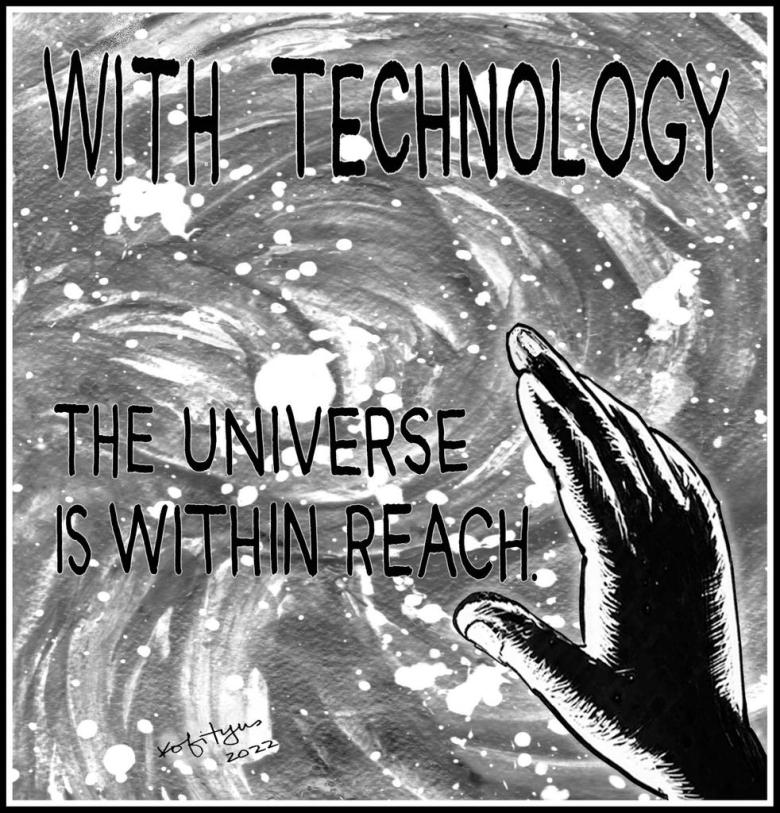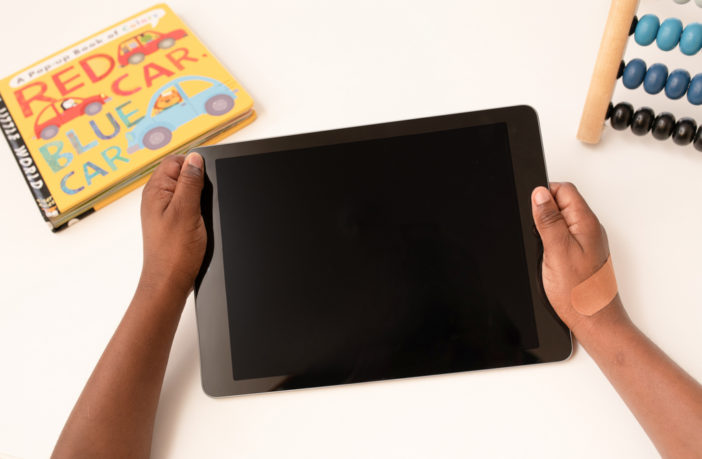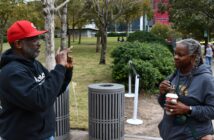By Kara Thompson,
Special to the AFRO
Teachers in Baltimore City Public Schools (City Schools) are using technology to their advantage to help keep their students engaged and up-to-date with learning materials.
Carol Gaskins is a fifth grade English Language Arts and Social Studies teacher at Bay-Brook Elementary/Middle School. One thing she utilizes in her classroom is tech that increases students’ access to schoolwork outside the classroom.
“I have a Google Classroom setup, so if anyone is ever missing or absent they can go onto Google Classroom and still be able to get the work and do the work,” she said.
Additionally, she uses technology to make sure parents stay connected with their students and classroom activities. Student behavior is tracked by adding or subtracting points on a virtual platform called Class Dojo.
“I have a Class Dojo, and that’s for the parents to see how their children are doing,” Gaskins said. “It’s connected to their phones so they can see when their child is getting a point or losing a point. We take pictures if we go on field trips and we post them on our Class Dojo so they can see it.”
Class Dojo is a popular classroom management platform that helps teachers connect with parents and build character in their scholars. Educators can give points for good character and positive choices, or subtract them when unwanted behaviors are displayed.
Aside from using online sites to communicate work and behavior updates to students and parents, Gaskins uses tools of technology to facilitate and engage learning in an experiential, interactive way and to measure the effectiveness of her teaching practice. SMART Boards are also a key academic gadget in the classroom, as chalk boards and regular dry erase boards and their inability to connect to the internet have long been outdated.
“I have them come up to the board if we’re doing something that they have to highlight or underline. It’s more interactive for them and I can see what students know and what I need to go back and reteach or redo,” said Gaskins.
Relying on technology for all lessons, however, is not best practice, as there can be situations where technology or websites are unavailable, or simply in need of upgrade or repair.
Gaskins said drawbacks to relying on devices in the classroom include system crashes or having to re-tweak lessons when there is bad weather affecting the technology.
Overall, she said her students enjoy having access to technology, as it allows them to work on their own, and at their own pace.
“On the upside, it keeps students engaged,” Gaskins said. “I have all types of lessons on the computer–when it’s small group time or when it’s independent reading–and they love it.”
Another bonus: there’s a reciprocal exchange of learning happening between Gaskins and her students as they learn more about navigating advanced technology.
“I’m learning things and they’re teaching me things about the computer I don’t know, and I’m teaching them things about the computer they don’t know.”
Sera Robinson, who splits her time between Medfield Heights Elementary School and Govans Elementary School, uses technology to teach her students about the world of music.

One of her biggest challenges was how to make such a hands-on class like general music become accessible to her students in an online environment. Since returning to the classroom, she started incorporating more technology into her lessons.
“Prior to the pandemic, I was not a big fan of using a lot of YouTube videos, but some wonderful music teachers took the time to put together resources for us. We are able to tap into those things to enhance our teaching,” Robinson said.
Even before the pandemic, she had been using videos to guide her teaching.
“There were a couple of orchestras that had stuff online San Francisco Symphony,” she said. “The resources were available, and I used those when I was doing orchestra units. “
Robinson now uses music software in her lessons for older students, which allows them to create on their own.
“I use something called Soundtrap, which the fine arts coordinator for City Schools was able to get for teachers in middle and high school and even upper elementary,” said Robinson. “Last year I taught at the middle school. So we use sound trap, which is a music making software -allowing the students to create their own compositions.”
Although Robinson has included more and more online resources and technology into her lessons, it is no replacement for hands-on experience with musical instruments.
“I use the technology to enhance what I’m doing, it is not the main tool in my classroom,” she said.
Help us Continue to tell OUR Story and join the AFRO family as a member –subscribers are now members! Join here!



